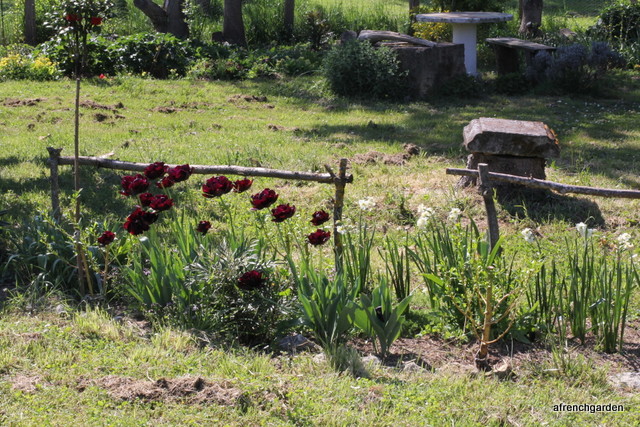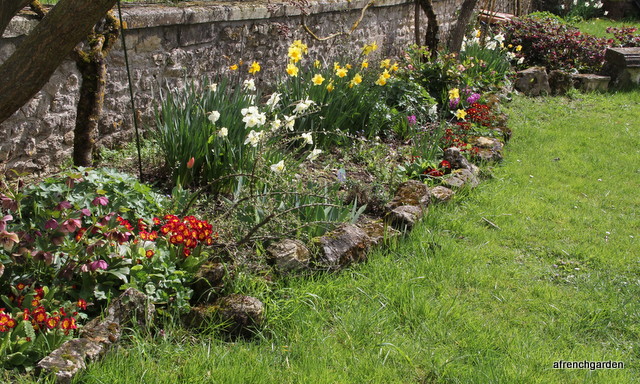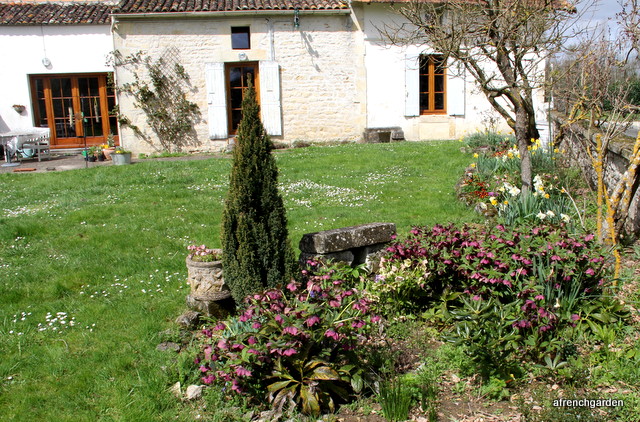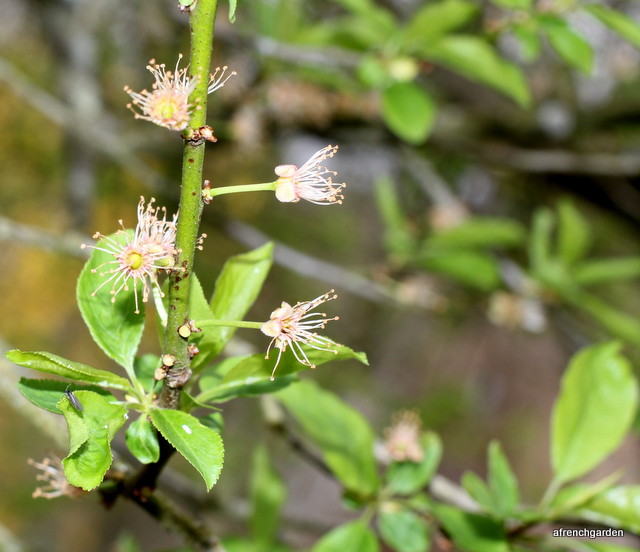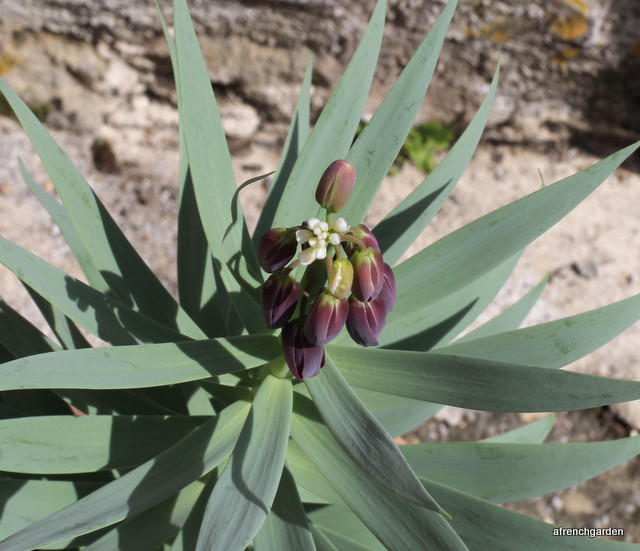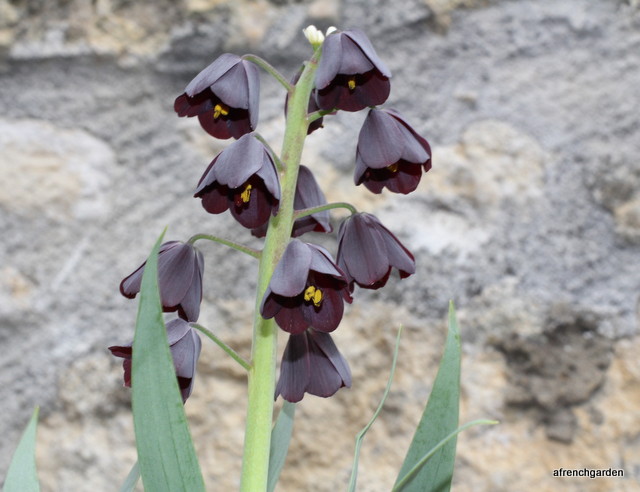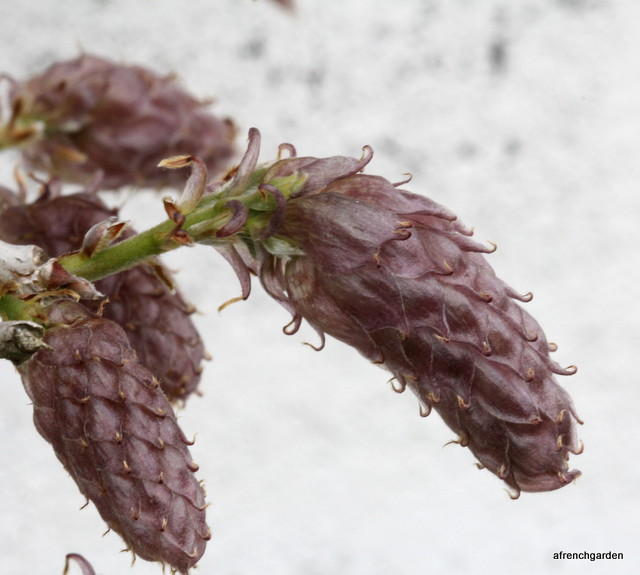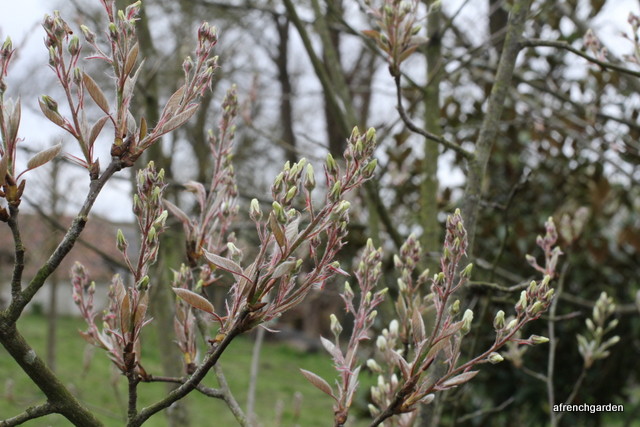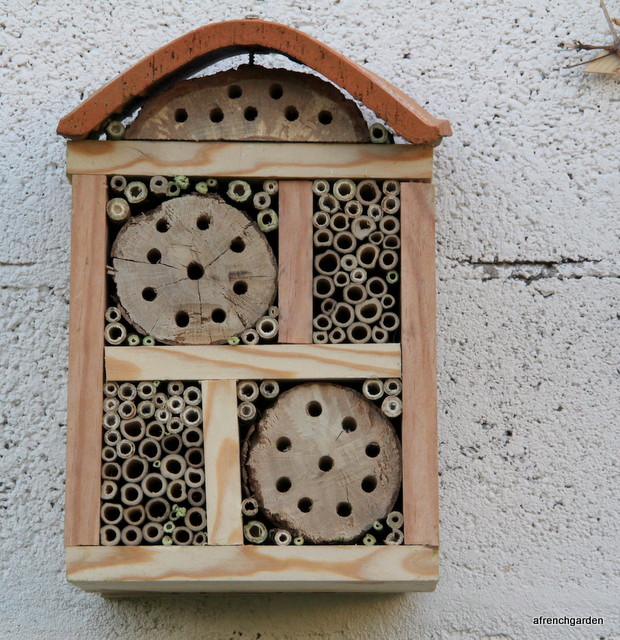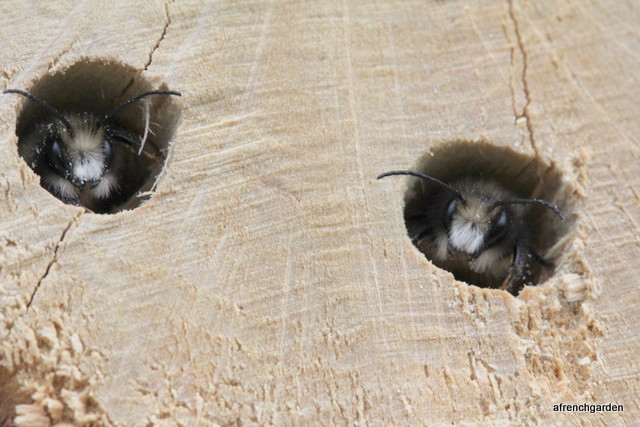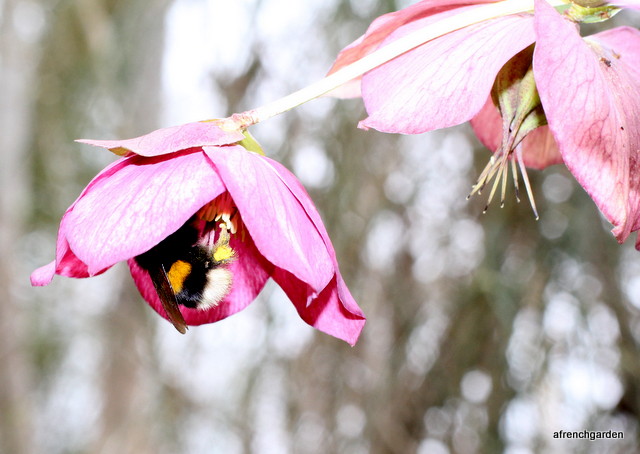Such a lot has changed in the garden this week. Looking from the outside of the front garden, the Wisteria is still in flower and the Iris and Arum lilies are pushing up to meet it. Unfortunately, so is the wild grass. The weed seeds get blown against the wall and find a comfortable place between the iris corms to put down roots. I’ll pull them out one day after it rains when the ground is nice and soft.
The lilac trees have started to flower adding their powerful perfume to the garden. The lilacs attract various butterflies and bees. This week it was a Map butterfly (Araschnia levana), they have two broods and this is the spring brood with more colourful wings.
This little glistening Halictid bee is not so highly coloured but has a metallic sheen and frequents the lilac too.
Another perfumed surprise was my “Coronille” which originated as some cuttings from a friend. I was not aware of how perfumed they were. This year they have become very respectable little bushes making an excellent hedging plant as they are evergreen.
The only problem is that no-one seems to know their proper name. It looks like the plant the RHS call Coronilla valentina subspecies Glauca “Citrina”. It is certainly my type of plant – easy to grow, perfumed, not too fussy and bees love it!
At the bottom of the garden both quince trees are still in flower. This one is the prettiest shape.
The other quince was called a German quince and is a longer shape tree. Strangely, the little round tree has round quinces and the German quince has longer shaped fruit. However, both fruits taste the same.
I planted red stemmed willows to try and make a screen where the large pine tree was removed. These have been cut back earlier and are all starting to shoot. It will be interesting to see what sort of screen I will have this summer. In the meantime..
I have lovely tulips to look at.
I am also very pleased with this thyme (another plant from a friend) which is full of flowers and is covering the ground but not impeding the Salvia to push through.
The chamomile is also working well as ground cover but slower than the thyme even though I re-rooted parts of it in the autumn. I think I will use the thyme as ground cover elsewhere in the garden.
I’ve seen more bees in the garden last week, so hopefully populations are building up again and I have heard of a swarm in the area. This is the normal time for the first swarms in this region.
Of course, the bees were not the first pollinators. This chafer may pollinise my quince tree as it flies from tree to tree munching on the pollen or it may just be very hungry and finish off the entire flower. I have checked – it has left plenty of flowers that should give me some fruit.
I bought this Centauria plant in a nursery in France to attract bees. So far it has been covered in ants! I wondered if they intended to farm aphids but there is no sign of aphids – yet.
There is one plant that the bees make a bee-line for – the poppies.
My light coloured Anthophora plumipes female is gathering pollen throughout the garden. My first poppies provide bright splashes of colour in the garden but these poppies appear in random places, self sown from last years seed. The seeds I have sown this year are up but are not flowering yet.
Another of my spring favourites is the Cerinthe. The pale green foliage is so fresh. It is beside some sedum in the picture above. I really must cut the flower stems on this sedum as they are starting to bud but the dried flower stems still look attractive even at this time of year.
The little spring bumble bees (Bombus praetorum) have arrived and buzz pollinate the Cerinthe. The sound of the bumble bees in the Cerinthe is part of the springtime in the garden.
I don’t suppose many people let their brussel sprouts flower for the bees.
I also wonder if these little bees (compare its size with the flower stamens) get mistaken for flies. I hope nobody tries to spray them with insecticide.







